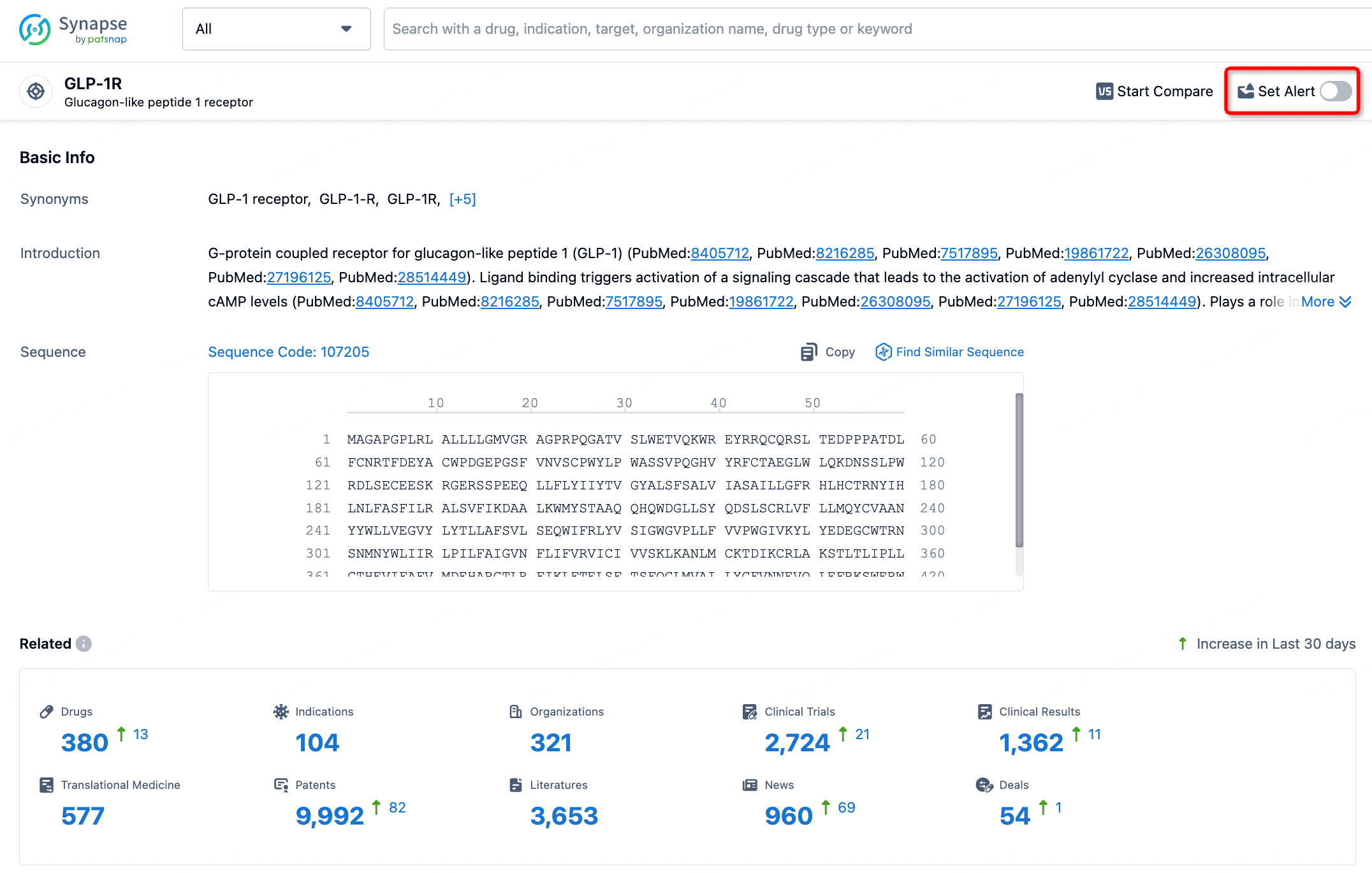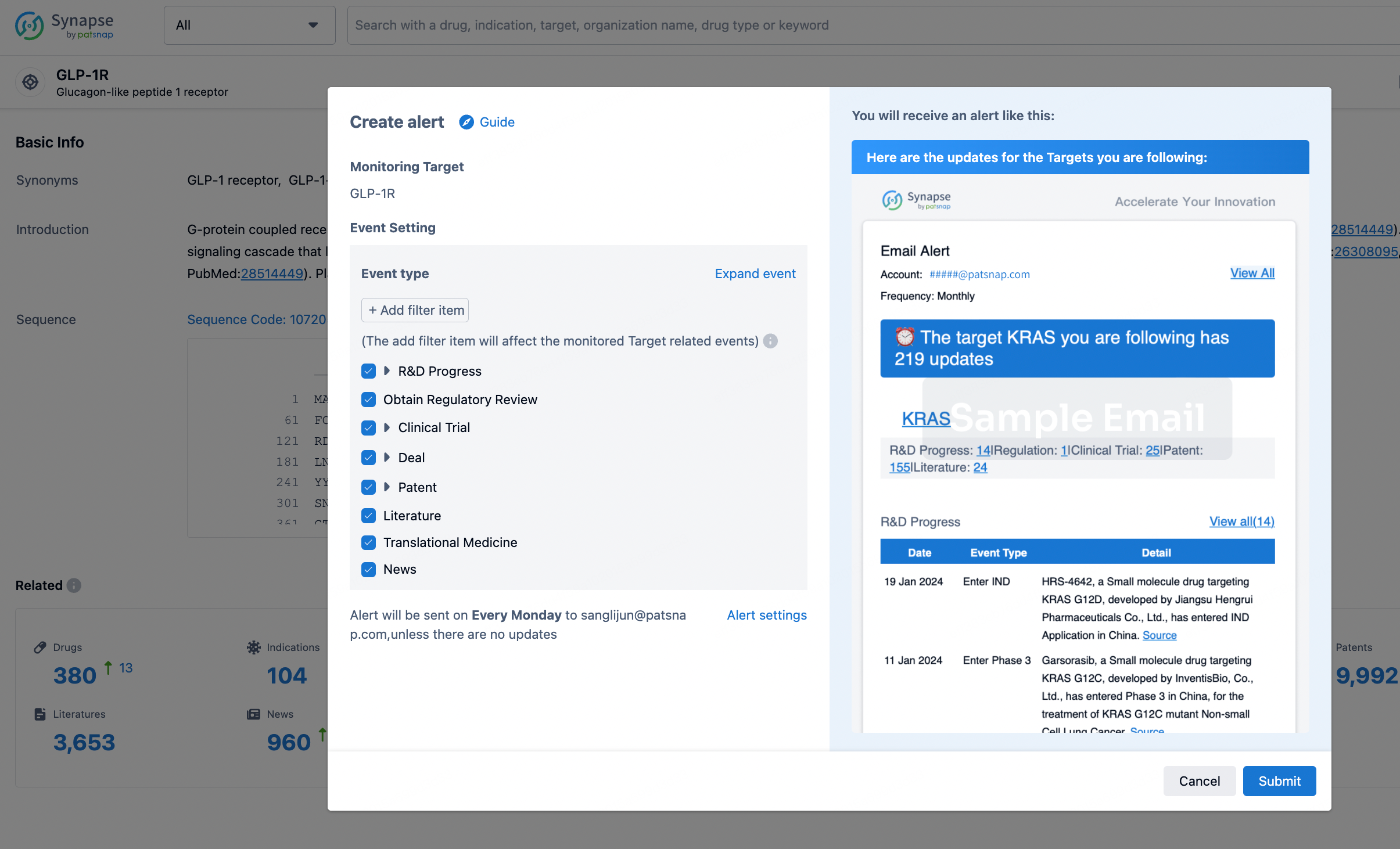Request Demo
What are CCR5 modulators and how do they work?
21 June 2024
CCR5 modulators have emerged as an exciting avenue in medical research and treatment, particularly in the realms of immunology and infectious diseases. These compounds interact with the CCR5 receptor, a protein on the surface of certain immune cells. Understanding how CCR5 modulators work, and what they are used for, offers insight into their potential to revolutionize treatments for a variety of conditions, including HIV and cancer.
CCR5, or C-C chemokine receptor type 5, is a receptor found on the surface of white blood cells. It plays a crucial role in the immune system by influencing the movement and activity of cells such as T cells, macrophages, and dendritic cells. CCR5 is particularly noted for its role in the inflammatory response, acting as a gateway that allows specific signaling molecules, called chemokines, to bind to immune cells and guide their movement to sites of inflammation or infection.
CCR5 modulators work by interacting with the CCR5 receptor, either blocking it or modifying its activity. One of the most well-known CCR5 modulators is maraviroc, an antiretroviral drug used in the treatment of HIV. Maraviroc binds to the CCR5 receptor, preventing the human immunodeficiency virus (HIV) from using it to enter and infect immune cells. By blocking this pathway, maraviroc reduces the ability of HIV to replicate and spread throughout the body.
The mechanism of action of CCR5 modulators can be broadly categorized into two types: antagonists and agonists. Antagonists, like maraviroc, block the receptor and prevent its interaction with natural ligands or pathogens. Agonists, on the other hand, activate the receptor in a controlled manner to modulate immune responses. The ability to either inhibit or stimulate CCR5 provides a versatile toolkit for addressing different pathological conditions.
CCR5 modulators are primarily used in the treatment of HIV/AIDS. The CCR5 receptor is one of the main entry points for HIV into immune cells. By blocking this receptor, CCR5 antagonists like maraviroc can significantly reduce viral load and improve immune function in patients. These drugs offer a critical line of defense, particularly for HIV strains that are resistant to other forms of antiretroviral therapy.
Beyond their application in HIV/AIDS, CCR5 modulators are being explored for their potential in treating other conditions, such as cancer. Tumors often exploit the CCR5 pathway to create an immunosuppressive environment that helps them evade the immune system. By blocking CCR5, researchers hope to boost the body’s natural immune response against cancer cells, making them more vulnerable to attack. Early-stage clinical trials have shown promising results, suggesting that CCR5 modulators could become an important part of cancer immunotherapy protocols.
Another promising area of research involves chronic inflammatory diseases, such as rheumatoid arthritis and multiple sclerosis. These conditions are characterized by an overactive immune response that leads to tissue damage. By modulating the activity of CCR5, it may be possible to reduce inflammation and alleviate symptoms. Studies in animal models have shown that CCR5 antagonists can reduce the severity of inflammation and improve outcomes, paving the way for potential new treatments in humans.
In infectious diseases beyond HIV, CCR5 modulators could play a role in conditions where the immune system is either overactive or needs to be bolstered. For example, during severe infections, the body’s immune response can sometimes cause more harm than good. By carefully modulating CCR5 activity, it may be possible to strike a balance that maximizes pathogen clearance while minimizing tissue damage.
In conclusion, CCR5 modulators represent a versatile and powerful class of therapeutic agents with the potential to address a wide range of medical conditions. By understanding how these compounds work and exploring their applications, researchers and clinicians can unlock new strategies for combating diseases that currently have limited treatment options. Whether in battling HIV, tackling cancer, or managing chronic inflammation, the future of CCR5 modulators looks promising, offering hope for improved patient outcomes across multiple domains of health.
CCR5, or C-C chemokine receptor type 5, is a receptor found on the surface of white blood cells. It plays a crucial role in the immune system by influencing the movement and activity of cells such as T cells, macrophages, and dendritic cells. CCR5 is particularly noted for its role in the inflammatory response, acting as a gateway that allows specific signaling molecules, called chemokines, to bind to immune cells and guide their movement to sites of inflammation or infection.
CCR5 modulators work by interacting with the CCR5 receptor, either blocking it or modifying its activity. One of the most well-known CCR5 modulators is maraviroc, an antiretroviral drug used in the treatment of HIV. Maraviroc binds to the CCR5 receptor, preventing the human immunodeficiency virus (HIV) from using it to enter and infect immune cells. By blocking this pathway, maraviroc reduces the ability of HIV to replicate and spread throughout the body.
The mechanism of action of CCR5 modulators can be broadly categorized into two types: antagonists and agonists. Antagonists, like maraviroc, block the receptor and prevent its interaction with natural ligands or pathogens. Agonists, on the other hand, activate the receptor in a controlled manner to modulate immune responses. The ability to either inhibit or stimulate CCR5 provides a versatile toolkit for addressing different pathological conditions.
CCR5 modulators are primarily used in the treatment of HIV/AIDS. The CCR5 receptor is one of the main entry points for HIV into immune cells. By blocking this receptor, CCR5 antagonists like maraviroc can significantly reduce viral load and improve immune function in patients. These drugs offer a critical line of defense, particularly for HIV strains that are resistant to other forms of antiretroviral therapy.
Beyond their application in HIV/AIDS, CCR5 modulators are being explored for their potential in treating other conditions, such as cancer. Tumors often exploit the CCR5 pathway to create an immunosuppressive environment that helps them evade the immune system. By blocking CCR5, researchers hope to boost the body’s natural immune response against cancer cells, making them more vulnerable to attack. Early-stage clinical trials have shown promising results, suggesting that CCR5 modulators could become an important part of cancer immunotherapy protocols.
Another promising area of research involves chronic inflammatory diseases, such as rheumatoid arthritis and multiple sclerosis. These conditions are characterized by an overactive immune response that leads to tissue damage. By modulating the activity of CCR5, it may be possible to reduce inflammation and alleviate symptoms. Studies in animal models have shown that CCR5 antagonists can reduce the severity of inflammation and improve outcomes, paving the way for potential new treatments in humans.
In infectious diseases beyond HIV, CCR5 modulators could play a role in conditions where the immune system is either overactive or needs to be bolstered. For example, during severe infections, the body’s immune response can sometimes cause more harm than good. By carefully modulating CCR5 activity, it may be possible to strike a balance that maximizes pathogen clearance while minimizing tissue damage.
In conclusion, CCR5 modulators represent a versatile and powerful class of therapeutic agents with the potential to address a wide range of medical conditions. By understanding how these compounds work and exploring their applications, researchers and clinicians can unlock new strategies for combating diseases that currently have limited treatment options. Whether in battling HIV, tackling cancer, or managing chronic inflammation, the future of CCR5 modulators looks promising, offering hope for improved patient outcomes across multiple domains of health.
How to obtain the latest development progress of all targets?
In the Synapse database, you can stay updated on the latest research and development advances of all targets. This service is accessible anytime and anywhere, with updates available daily or weekly. Use the "Set Alert" function to stay informed. Click on the image below to embark on a brand new journey of drug discovery!
AI Agents Built for Biopharma Breakthroughs
Accelerate discovery. Empower decisions. Transform outcomes.
Get started for free today!
Accelerate Strategic R&D decision making with Synapse, PatSnap’s AI-powered Connected Innovation Intelligence Platform Built for Life Sciences Professionals.
Start your data trial now!
Synapse data is also accessible to external entities via APIs or data packages. Empower better decisions with the latest in pharmaceutical intelligence.


